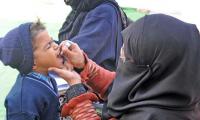The midst of Pakistan’s rapid urbanization and economic development, the slums stand as a stark reminder of the disparities that persist. While the cities around them flourish, these communities grapple with adversities and despair.
According to World Bank stats of 2020, around 56% of urban population in Pakistan is residing in slums. The large slums are 200 in number with many other small slums adjacent to them. Karachi and Hyderabad, the hosts of 1300 slums having Orangi Town, been considered one of the world’s largest slums. Now the question arises here, “How do these shadowed lives continue to persevere?” The answer lies in the unwavering spirit and resilience of the slum dwellers.
Muhammed Sabir, a slum dweller from Lahore, depicts a journey from sagging a garbage bag to his shoulder to being an activist. Pakistan is ranked fifth among the high-burden TB countries globally. In 2020, it was estimated that there were about 570,000 new TB cases in Pakistan, with a significant proportion originating from urban slums. According to the National Nutrition Survey 2018, 40.2% of children under five in Pakistan were stunted, with slum areas showing higher rates due to food insecurity and poor dietary diversity. Common ailments include diarrhea, respiratory infections, and skin diseases.
The lack of proper sewage systems and clean drinking water exacerbates these issues. Malnutrition is prevalent in urban slums, affecting both children and adults. Pakistan has a high maternal mortality rate (MMR). As of 2019, the MMR was estimated at 186 deaths per 100,000 live births, with higher rates in slum areas due to lack of access to skilled birth attendants and emergency obstetric care. Typically resulting from poverty, slums are found in overlooked areas such as vacant lands, embankments (like Machar Colony built above water on stilts), steep hillsides (like Hazara), and landfill sites within urban and suburban areas such as Orangi Town, Karachi marked by the most unhygienic conditions.
When one ponder over the way of betterment of slums, a solution can reside in care giving policies for slum dwellers. First and foremost, health policies must be introduced for all to reduce the spread of communicable diseases inclusive of immunizations for preventable diseases, health clinics or mobile health units and offering screening and early treatment for communicable diseases such as tuberculosis and HIV/AIDS. “Clean and Clear Slums policy”, for the purpose of cleanliness, must be introduced inclusive of proper sanitation infrastructure, segregation and recycling off waste, maintaining drainage systems and filters for clean drinkable water.
In a nutshell, the eradication of plight of Pakistan slum dwellers demands a holistic and comprehensive approach in which the collaborations and joint meetings of government with NGOs, local communities and policy makers can make a way for slum dwellers to uplift themselves thus ensuring dignified living standards and fostering sustainable development across urban areas.Simran Mansoor, student of Quaid-e-Azam University
Salman Chaudhry, IG, National Highways & Motorway Police pictured on January 15, 2024. — Facebook@National Highways...
A Russian delegation led by Valentina Matvienko, Federation Council of the Russian Federation looks at a painting...
A health worker administers polio drops to a child during the Polio Free Pakistan campaign in Islamabad on October 28,...
Dengue patient under medical treatment in a ward at a Hospital on October 24, 2024. — APPRawalpindi : Dengue fever...
Defence expert Maj Gen Samrez Salik addresses a seminar on October 10, 2023. — Screengrab via...
IWMB officials treat a male leopard rescues from the Azad Jammu and Kashmir region. — APP/FileIslamabad : A male...







